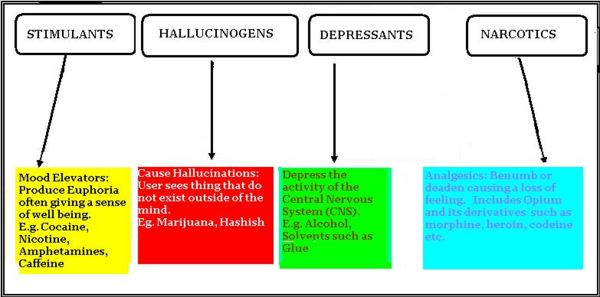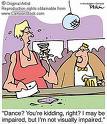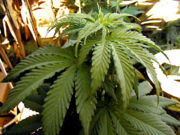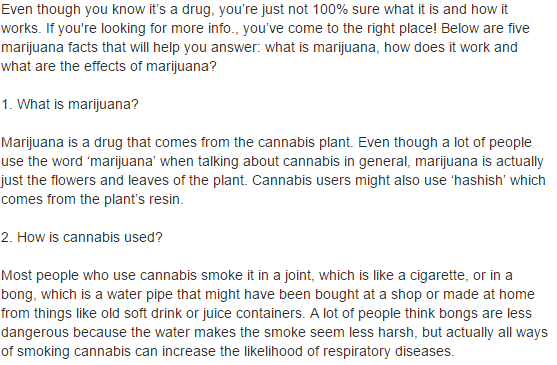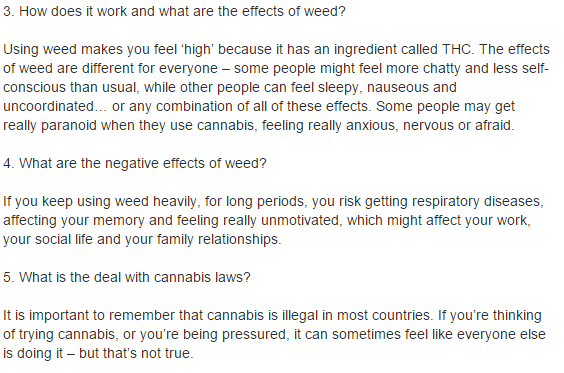Substance Abuse
footballers
Contents
What is Substance Abuse?
In 1972, the American Psychiatric Association created a definition that used legality, social acceptability, and even cultural familiarity as qualifying factors:
…as a general rule, we reserve the term drug abuse to apply to the illegal, non medical use ofa limited number of substances, most of them drugs, which have properties of altering the mental state in ways that are considered by social norms and defined by statute to be inappropriate, undesirable, harmful, threatening, or, at minimum, culture-alien.
Substance abuse refers to the overindulgence in and dependence on a psychoactive leading to effects that are detrimental to the individual's physical health or mental health, or the welfare of others. The disorder is characterized by a pattern of continued pathological use of a medication, non-medically indicated drug or toxin, that results in repeated adverse social consequences related to drug use, such as failure to meet work, family, or school obligations, interpersonal conflicts, or legal problems. There are on-going debates as to the exact distinctions between substance abuse and substance dependence, but current practice standard distinguishes between the two by defining substance dependence in terms of physiological and behavioural symptoms of substance use, and substance abuse in terms of the social consequences of substance use.
Substance abuse may lead to addiction or substance dependence. Medically, physiological dependence requires the development of tolerance leading to withdrawal symptoms. Both abuse and dependence are distinct from addiction which involves a compulsion to continue using the substance despite the negative consequences, and may or may not involve chemical dependency. Dependence almost always implies abuse, but abuse frequently occurs without dependence, particularly when an individual first begins to abuse a substance. Dependence involves physiological processes while substance abuse reflects a complex interaction between the individual, the abused substance and society.
Drug Abuse Substance abuse is sometimes used as a synonym for drug abuse, drug addiction, and chemical dependency, but actually refers to the use of substances in a manner outside socio-cultural conventions. All use of illicit drugs and all use of illicit drugs in a manner not dictated by convention (e.g. according to physician's orders or societal norms) is abuse according to this definition, however there is no universally accepted definition of an abused substance.
Drugs and Substance Abuse
|
Checklists of Performance Task
| RUBRIC of performance criteria | V. Well Done | Well Done | OK | Not Ok- Will redo by …. | |
|---|---|---|---|---|---|
| 1. | My definition stated that a drug is any substance other than food or water which when taken alters the physiological or mental functions of the body | ||||
| 2. | I explained that dependence refers to the body needing the drug to complete a metabolic pathway while addicition refers to the individual wanting the drug despite its negative consequences. | ||||
| 3. | My answer was Yes Aspirin can be abused as one can overindulge in taking aspirin and become addicted to it. |
Classification of Drugs
The diagram below shows the different groups of drugs.These include stimulants, hallucinogens, depressants and narcotics.
Depressants
Alcohol
Alcohol is a socially accepted drug in most countries. It is therefore one of the most frequently abused drugs. Alcohol is a depressant. It is important for you to know that alcohol depresseses the activities of the Central Nervous System. This increases your reaction time and impedes your judgment. As a result the abuse of alcohol may lead to traumatic death or injury e.g. though car crashes. Prolonged drinking may also lead to liver disease ( cirrhosis of the Liver), acute alcohol poisoning ( alcohol toxity) and foetal alcohol syndrome (damage to the foetus in utero).
Solvents: Glue Snifffing
Solvent abuse involves the use of any kind of volatile substance (that is, one that gives off fumes at room temperature) to get a high. A common form of solvent abuse is 'glue sniffing'. However, many different everyday products, can also be abused. The inhalation or 'sniffing' of vapurs through the mouth or nose can also be as solvent abuse.
Sniffing is a very dangerous practise. Death may occur very suddendly and even during your first sniffing session. Are you aware that more teen agers die from sniffing household products than from all the illegal drugs. Can you suggest why?
Stimulants
|
Crack Cocaine Cocaine "coke" is obtained from the Coca Plant. Cocaine can be inhaled or it can be made into a solution and directly injected into the vein. It can also be converted into a flammable compound know as "crack" and smoked. After smoking or injecting cocaine you may feel euphoric and very energetic.However, the detrimental health effects on the body include heart attacks, respiratory failure, strokes, and seizures. Taken in large amounts cocaine may also cause strange and vioent behaviour patterns and, in rare occasions, even death . Nicotine This is another socially accepted drug in the Western Hemisphere. Nicotine is the drug component found in Tobacco Leaves. The drug enters the body through the smoking, chewing or sniffing of tobacco. Nicotine is similar in shape to the natural brain neuro-transmitter acetycholine. It acts by binding to acetycholine receptors in the brain, resulting in increased heart and respiratory rates and mobilisation of blood glucose. This is the reason why smokers feel alert after smoking a cigarette. <p>Nicotine also has detrimental effects on the cardio-vascular system. It causes platelets to stick together making the smoker more at risk to strokes and other diseases of the brain and cardio-vascular system. |
 True or False? Statements about stimulants
True or False? Statements about stimulants
| INTRODUCTION:
Cocaine is a stimulant. Its effects vary depending on the method of consumption, as well as the quality of the product and of course the quantity consumed; effects also vary according to the person consuming and consumer environment. It causes a phase of exaltation which results in high energy and stimulation of physical and mental performance. Cocaine gives great confidence and increased self-esteem tend to megalomania. Cocaine also causes a feeling of warmth, a feeling of increased alertness, insensitivity to fatigue, pain and hunger. Duration of effects: When snorted (insulfated), cocaine enters the bloodstream in 3 to 5 minutes and lasts about an hour. Its maximum effects are achieved after 20 minutes. Injected: immediate entry to the blood stream and maximum effects appear after 10 minutes. The effects last for around 30 minutes. Orally: it takes 30 minutes for cocaine to enter the bloodstream, and peak effects occur after an hour. In case of regular use, the effects are followed by a period of "come-down" where the user goes from euphoria to a state of fatigue often accompanied by depression. STATEMENT 1: Cocaine remains in the bloodstream for up to a day. This is correct. Cocaine is detectable in the blood for up to 24 hours, and in the urine for up to 4 days. STATEMENT 2: Cocaine is a drug for footballers, rockstars and the rich, right? In recent years, even though cocaine is still expensive, this product has become "trendy" to an increasingly wide audience from all backgrounds. This drug is also increasingly media-present (in movies, series, pubs ...) and benefits in certain of a positive image because he still associates with rhinestones and the party. This is a misleading picture because Cocaine is a particularly toxic drug that causes significant dependence and damage. STATEMENT 3: In the United Kingdom cocaine's legal status is Class A controlled substance This statement is correct. In the United Kingdom cocaine is a class A controlled drug. |
Hallucinogens
|
Facts about Cannabis Sativa (Marijuana): |
| STATEMENT | TRUE/FALSE |
|---|---|
| Cannabis comes from the Marijuana plant. |
|
| Smoking marijuana through a bong is less harmful. |
|
| The chemical ingredient in Marijuana which gives people the feeling of being 'high' is known as "LSD". |
|
| Cannabis sniffing is a form of substance abuse. |
|
| Marijuana is a brown powder. |
|
| THCs are the active compounds in Marijuana. |
|
Narcotics:The Opiates
Opium and its derivatives are drugs derived from the poppy plant. Morphine and Codeine are examples of opiates which are used medicinally. Opiates are analgesics (pain killers) and may produce the following effects: sedation, raspy speech, slowed reflexes, sluggish movements, slowed breathing, cold skin, and maybe vomiting.
Heroin
This is a commonly abused opiate. It is a white or brown powder, derived from the opiate, morphine. Heroin is usually injected into the veins. Short-term effects of heroin use may be a surge in euphoria followed by aklternate drowsy and wakeful moments. Tolerance to the drug develops, that is you will need more and more of the drug to experience the same degree of euphoria. However, the fatal dose remains the same. In addition, sharing of needles introduce the risk of contraction of hepatitis and HIV AIDS.
|
Susan was a heroin user. After using the drug for a while she found that she had to take more and more of the drug to experience the same high. So her drug intake increased until she was taking 4.5 mg of the drug. One day Susan took 5 mg. of heroin. She overdosed and died.
|
- I explained that Susan had developed Tolerance (link to definitions) to Heroin. Very Well ; OK, Not so Good.
- I explained that eventhough Susan had grown tolerant to Heroin the lethal dose remained the same. Very Well ; OK, Not so Good.
| STATEMENT | TRUE/FALSE |
|---|---|
| Marijuana is a hallucinogen. |
|
| Alcohol abuse may result in Liver Disease. |
|
| Nicotine is a depressant as it depresses the activity of the Central Nervous System. |
|
| Glue sniffing is a form of substance abuse. |
|
| Marijuana is a brown powder derived from opium. |
|
| Smoking crack can lead to strokes or respiratory seizure. |
|
| Morphine and heroin are used by doctors as pain killers. |
|
| THCs are the active compounds in Marijuana. |
|
| STATEMENT | TRUE/FALSE |
|---|---|
| Marijuana is a hallucinogen. | |
| Alcohol abuse may result in Liver Disease. | |
| Nicotine is a depressant as it depresses the activity of the Central Nervous System. | |
| Glue sniffing is a form of substance abuse. | |
| Marijuana is a brown powder derived from opium. | |
| Smoking crack can lead to strokes or respiratory seizure. | |
| Morphine and heroin are used by doctors as pain killers. | |
| THC are the active compounds in Marijuana. |
